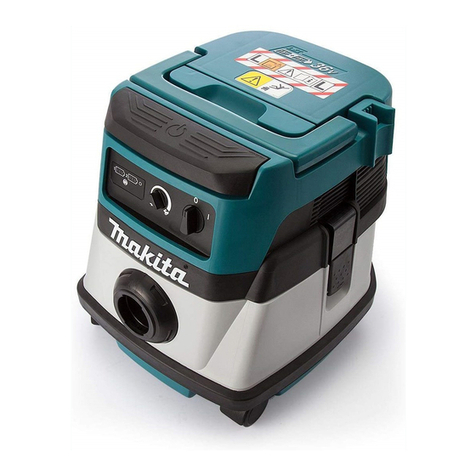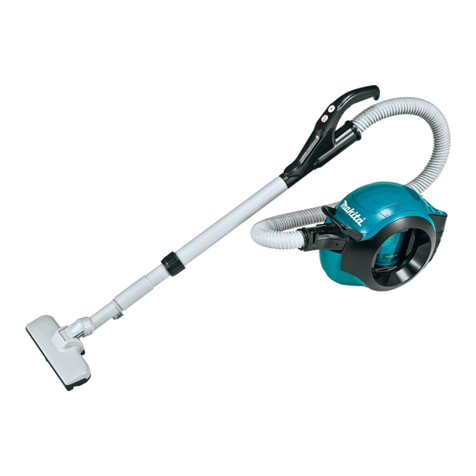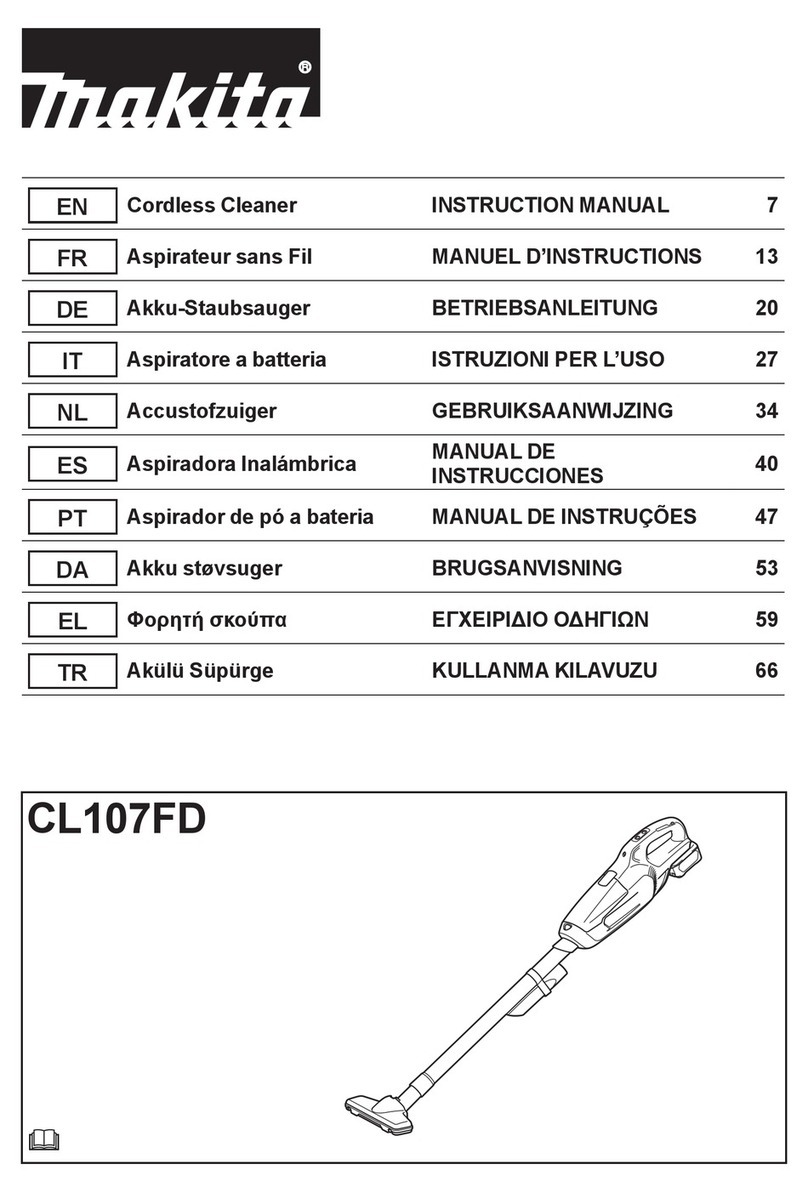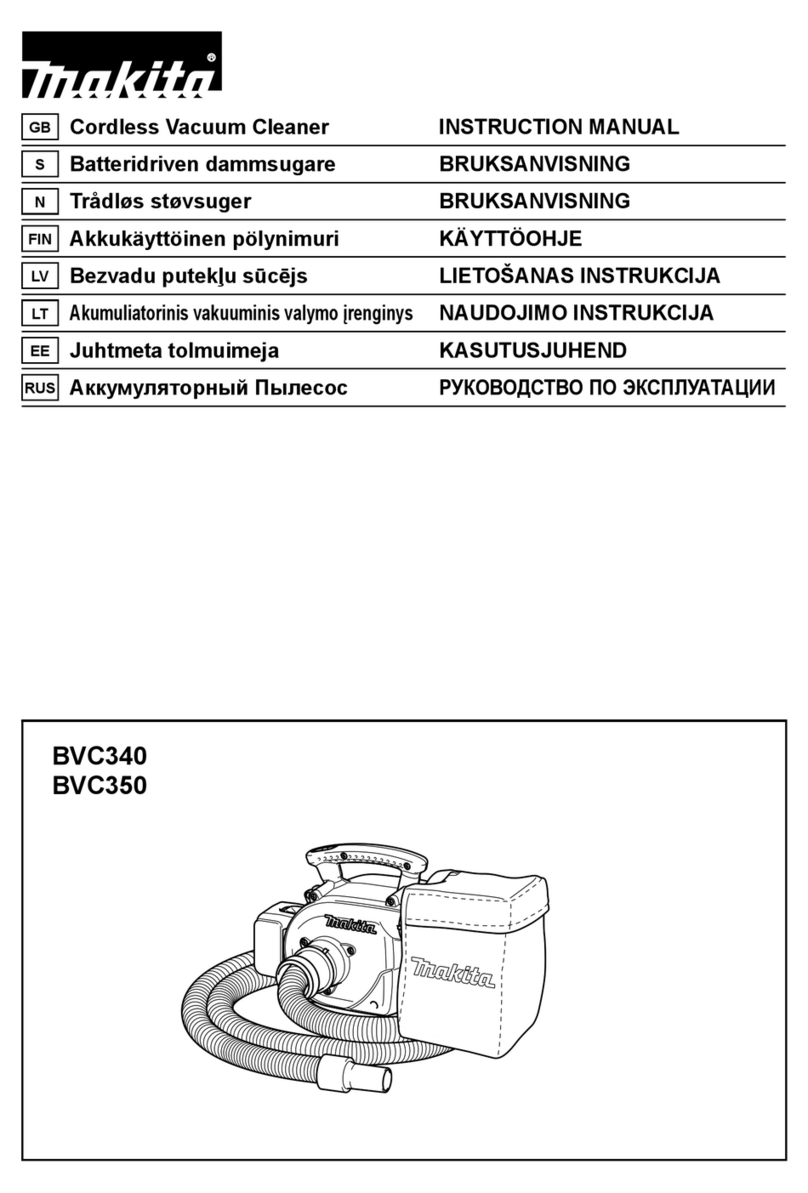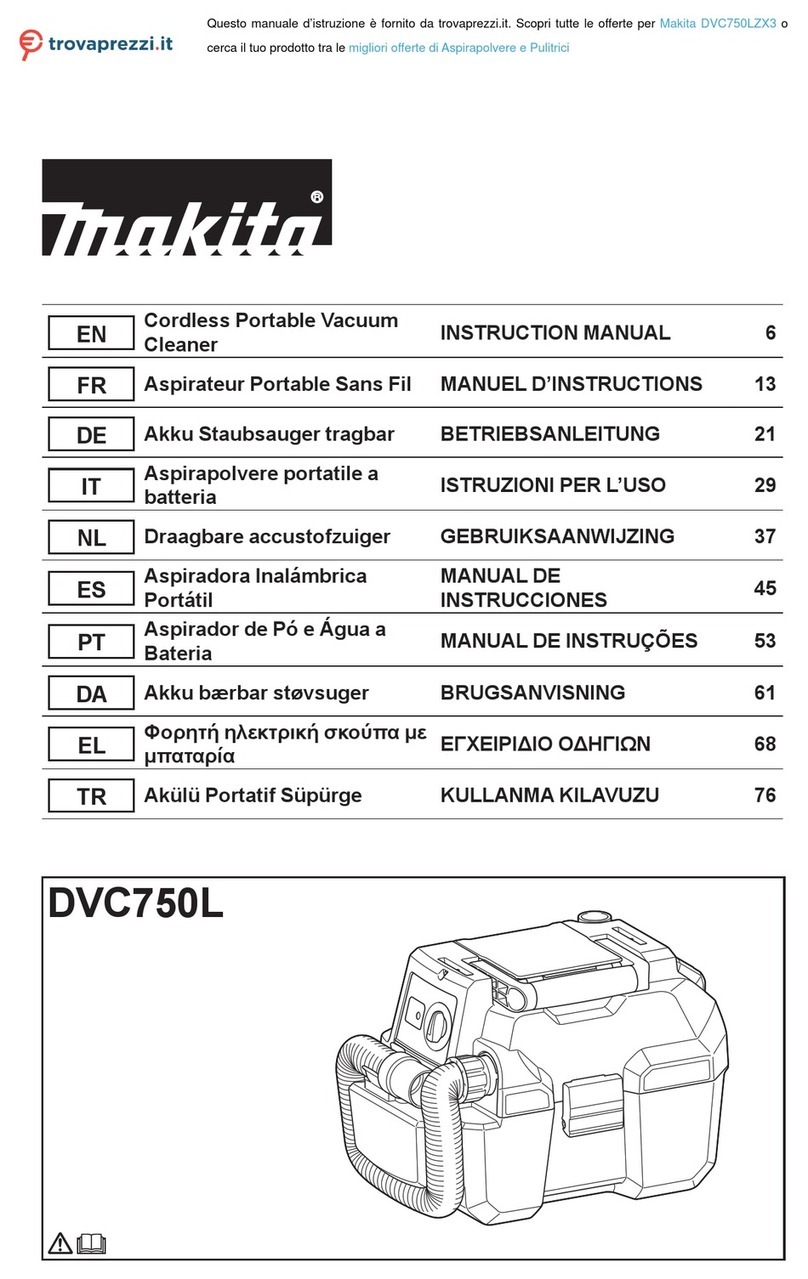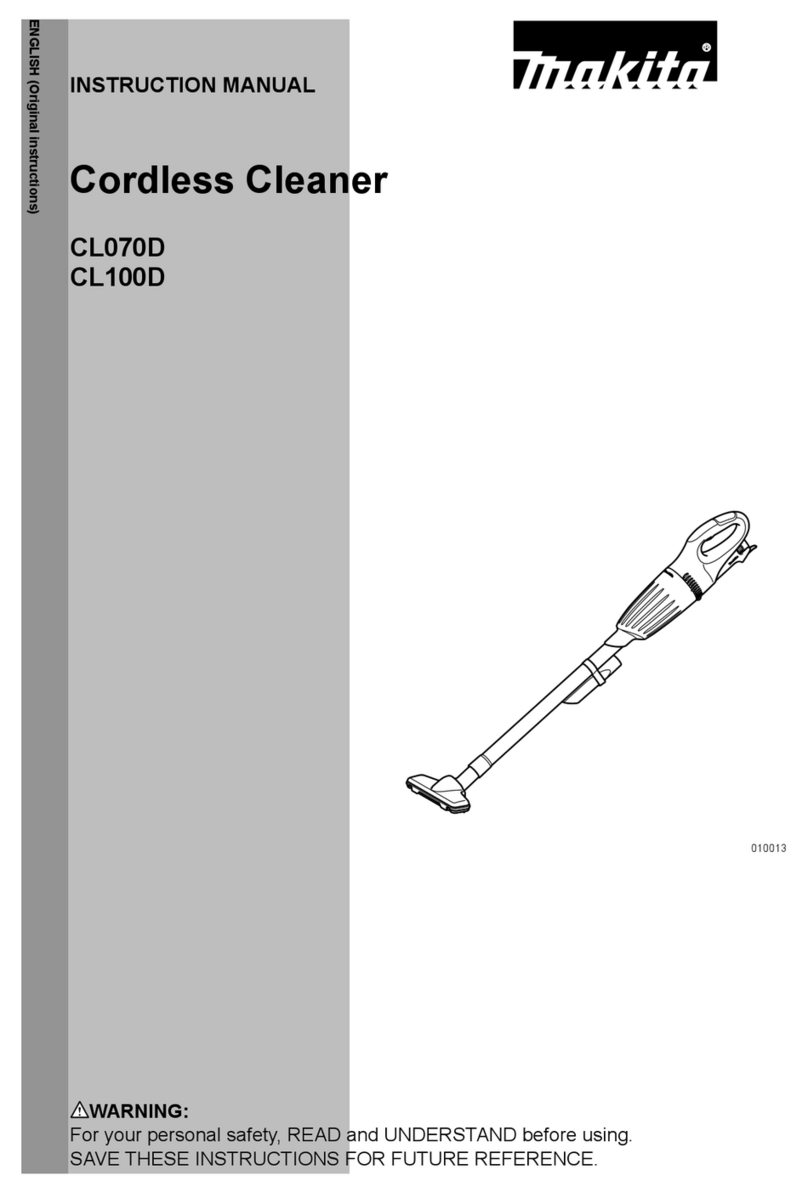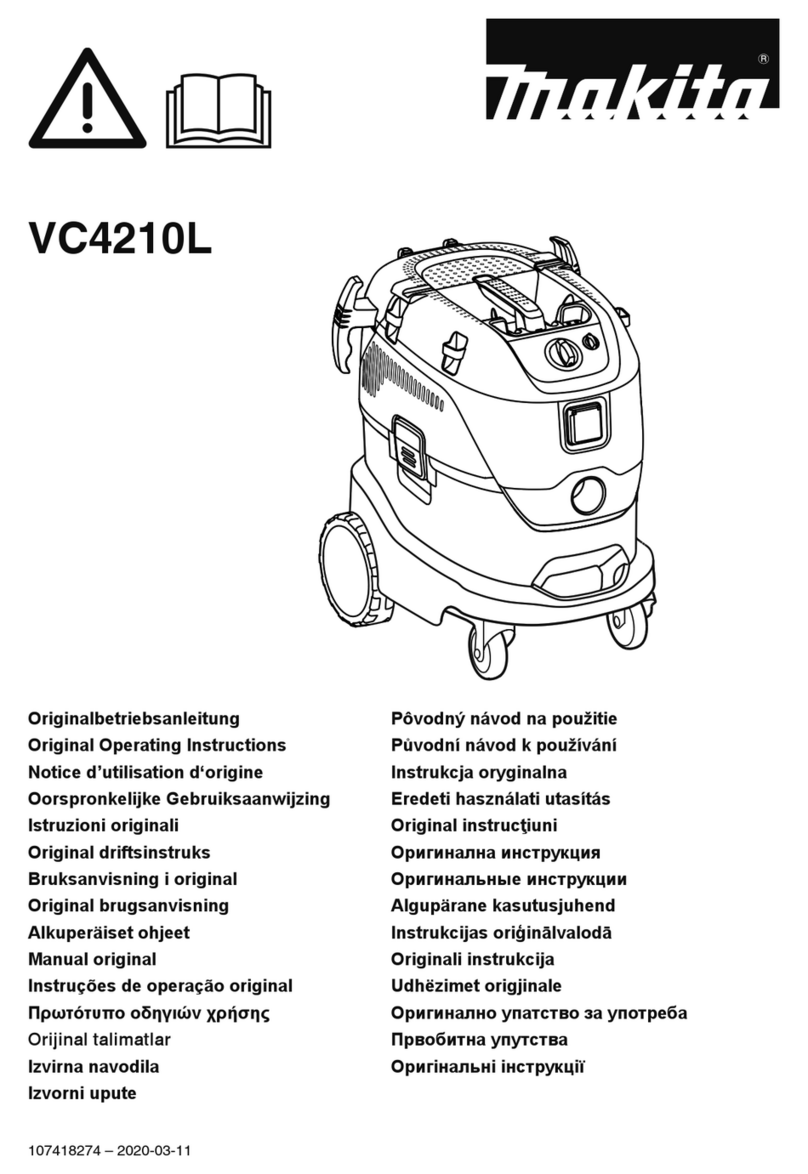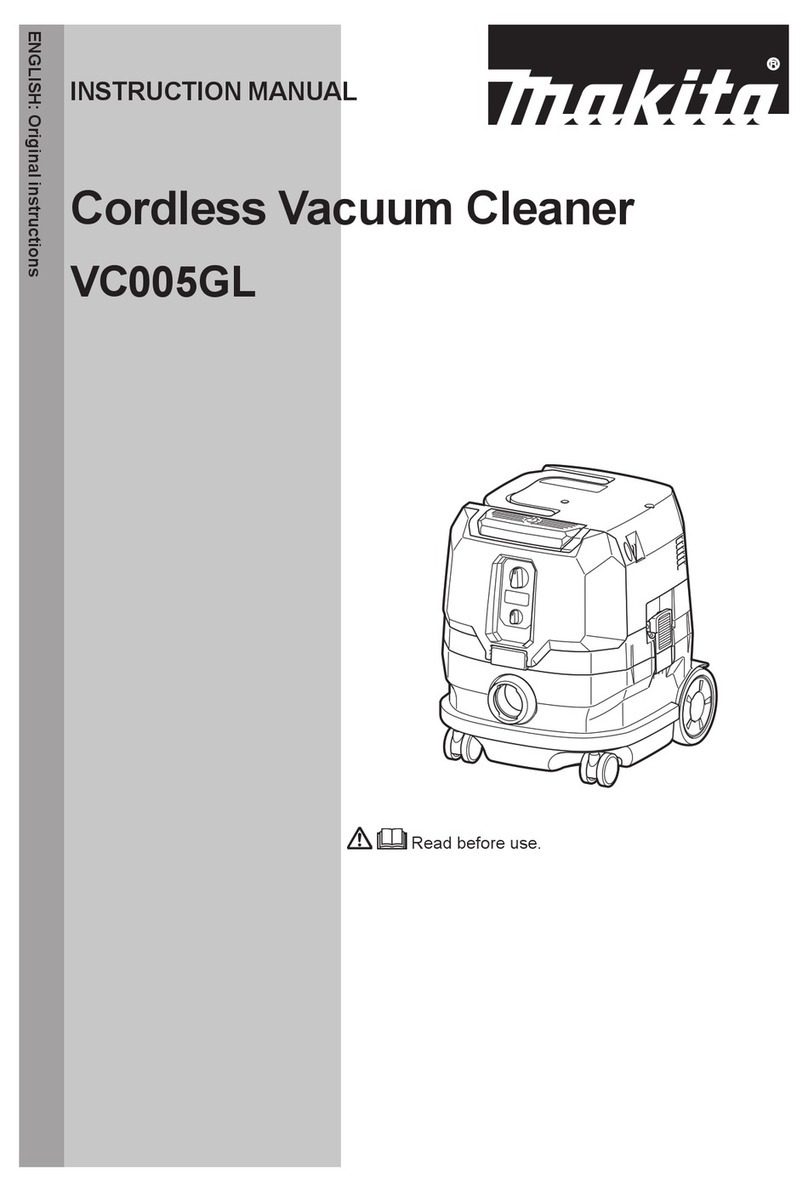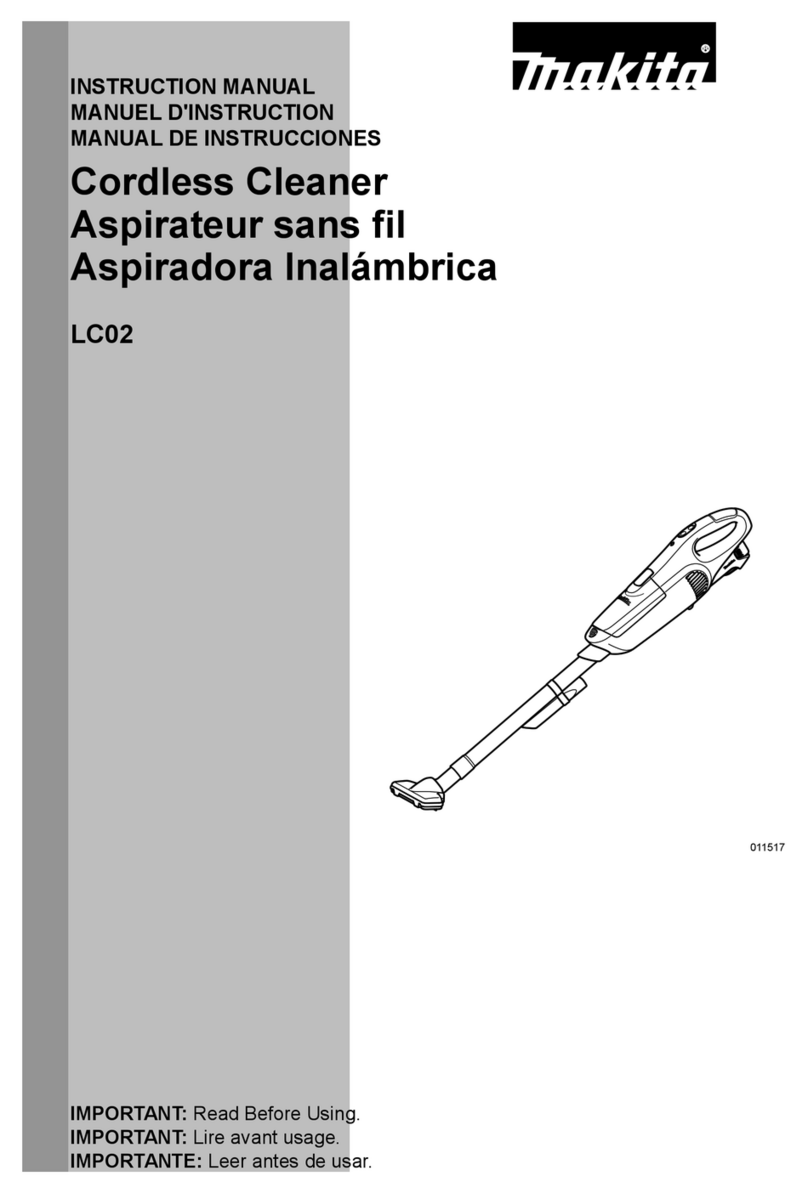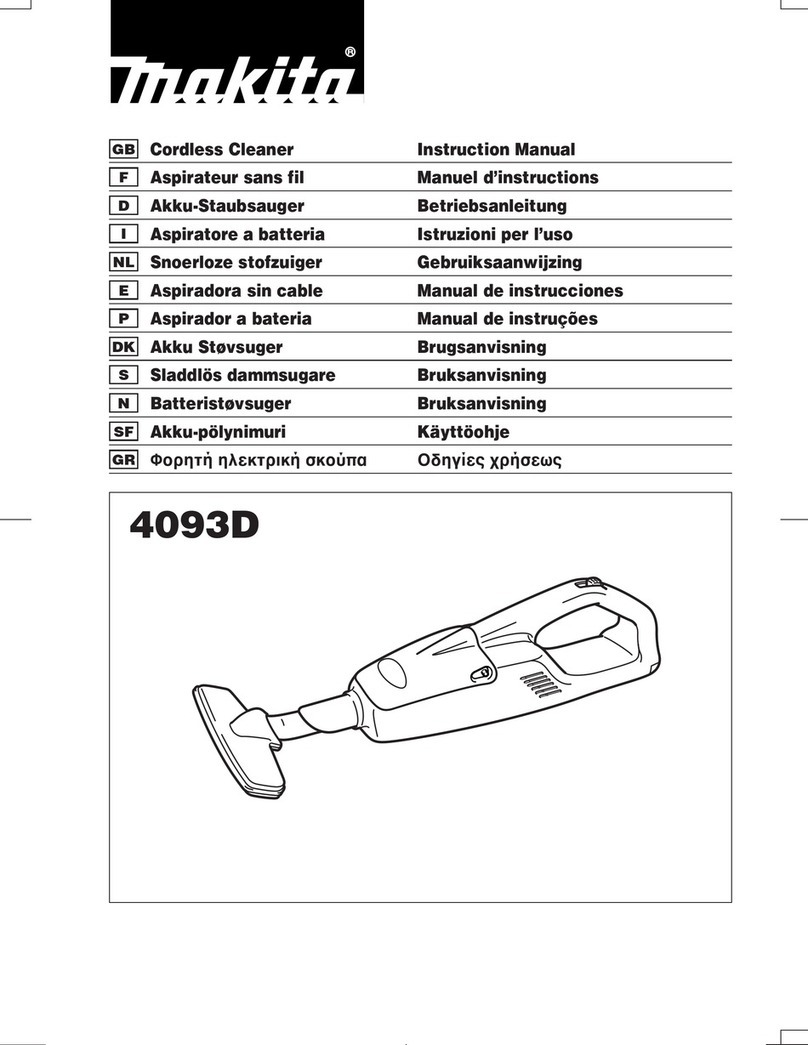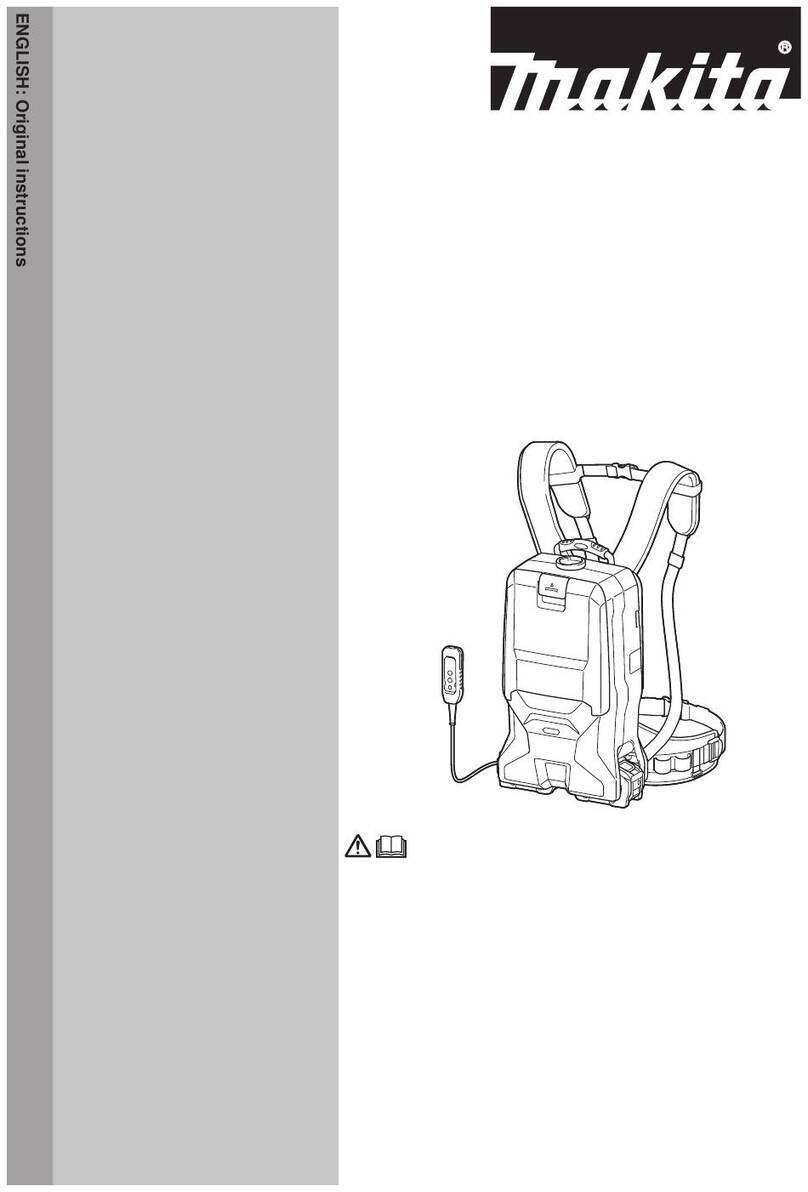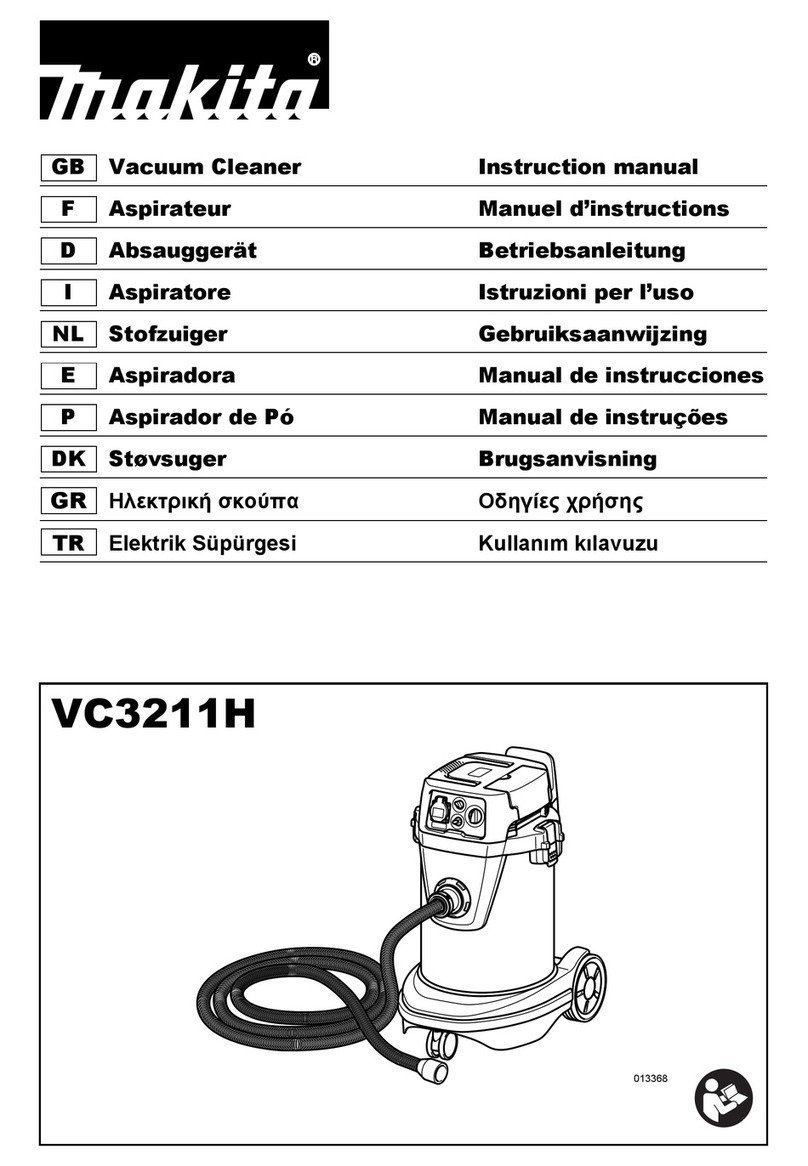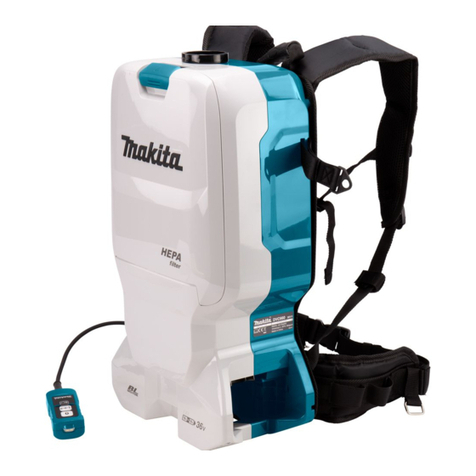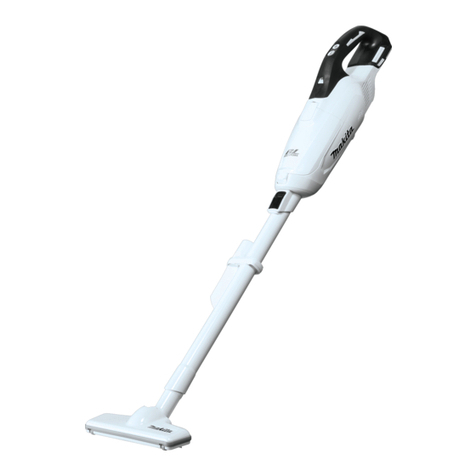
10 ENGLISH
ENGLISH (Original instructions)
WARNING
• This machine is not intended for use by persons including children with reduced physical, sensory or mental
capabilities, or lack of experience and knowledge.
• Children should be supervised to ensure that they do not play with the cleaner.
• See the chapter “SPECIFICATIONS” for the type reference of the battery.
• See the section “Installing or removing battery cartridge” for how to remove or install the battery.
• When disposing the battery cartridge, remove it from the tool and dispose of it in a safe place. Follow your local
regulations relating to disposal of battery.
• If the tool is not used for a long period of time, the battery must be removed from the tool.
• Do not short the battery cartridge.
• See the chapter “MAINTENANCE” for the appropriate details of precautions during user maintenance.
SPECIFICATIONS
Model: VC006GM
Maximum air volume at the end
of hose
With BL4050F, ø28 mm x3.5 m hose
2.0 m3/min
With BL4050F, ø38 mm x 2.5 m hose
3.7 m3/min
Maximum air volume at turbine (with BL4050F) 4.9 m3/min
Vacuum (with BL4050F) 18 kPa
Recoverable capacity Dust 40 L
Water 30 L
Dimensions (L x W x H) 586 mm x 385 mm x 598 mm
Rated voltage D.C. 72 V - 80 V max
Net weight 18.4 - 20.8 kg
Protection degree IPX4
without notice.
• The weight does not include accessories but battery cartridge(s). The lightest and heaviest combinations
weight of the appliance and battery cartridge(s) are shown in the table.
Applicable battery cartridge and charger
Battery cartridge BL4020 / BL4025 / BL4040* / BL4050F* / BL4080F*
* : Recommended battery
Charger DC40RA / DC40RB / DC40RC
• Some of the battery cartridges and chargers listed above may not be available depending on your region of
residence.
WARNING: Only use the battery cartridges and chargers listed above. Use of any other battery cartridges



